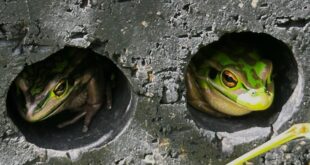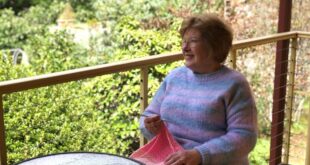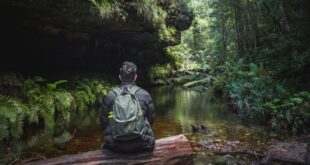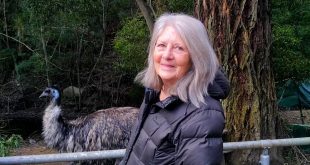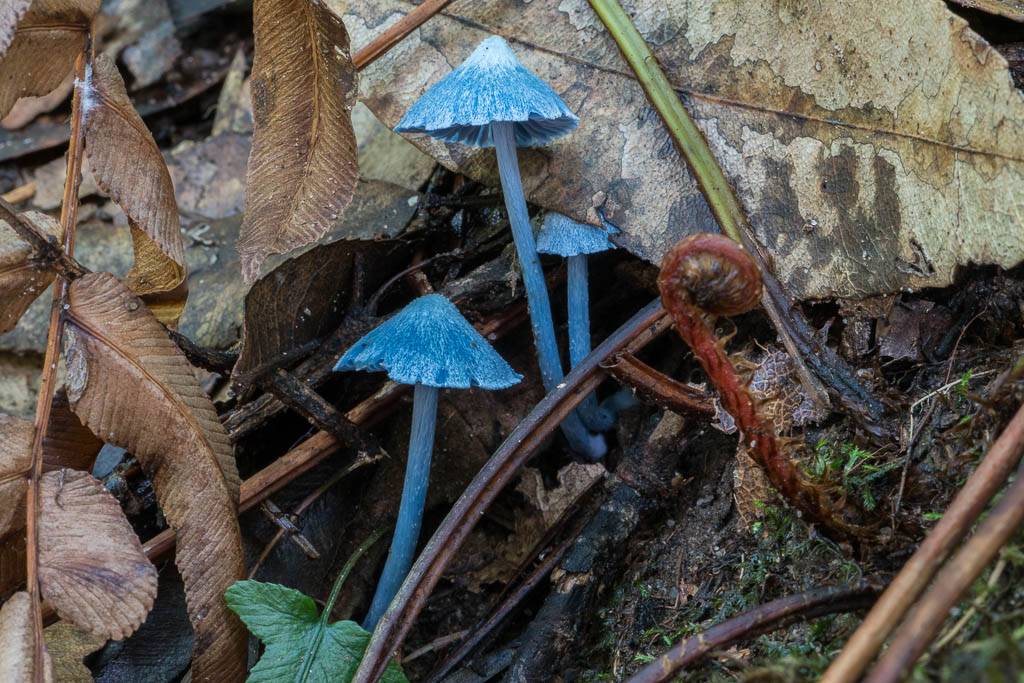
Stuff of the fairies. Inocephalus virescens (Photo: David Noble)
Story by Linda Moon
Maligned through the ages for their association with witchcraft, disease, drug use and poisonings, the fungus kingdom is gaining due credit thanks to ecologists, photographers and foragers.
Key Points:
- With their diverse ecosystems, Lithgow, the Blue Mountains, and Australia more generally, are a hotspot for fungus species.
- The vast, hidden kingdom of the underground mycelium plays a central role in soil health, recycling and sustaining life on the planet.
- Fungi can play a role in mediating the effects of climate change, bushfires and pollutants. Helping fungi helps us.
It’s mushroom season again. For a short spell, mushie workshops, tours and outings are popping up on social calendars.
In reality, the fungal network (the mycelium) persists year round. Composed of a subterranean web of tiny, spreading filaments, it quietly continues performing a job pivotal to life on the planet.
The bush carer
The mushrooms we see popping up almost magically are just the fruiting body of fungi, explains Steven Fleischmann, a Landcare Coordinator in Lithgow and Bushcare Officer for Blue Mountains City Council. “Autumn, with rain and cooler temperatures, is when the mushroom season kicks off. That’s when they have their sexual fruiting. Unlike a flower it doesn’t have pollen, it has spores,” he says.
Steven first became captivated with fungi as a teenager in the 80s. “I used to buy mushroom kits and grow them. One of the first things I learned to cook was mushroom soup. It started as a culinary thing.” His interests in ecology, land management and growing food continued to fuel the passion. “Just doing the work I do in the bushland areas [his job takes him between Glenbrook to Oberon] you see fungi everywhere.”
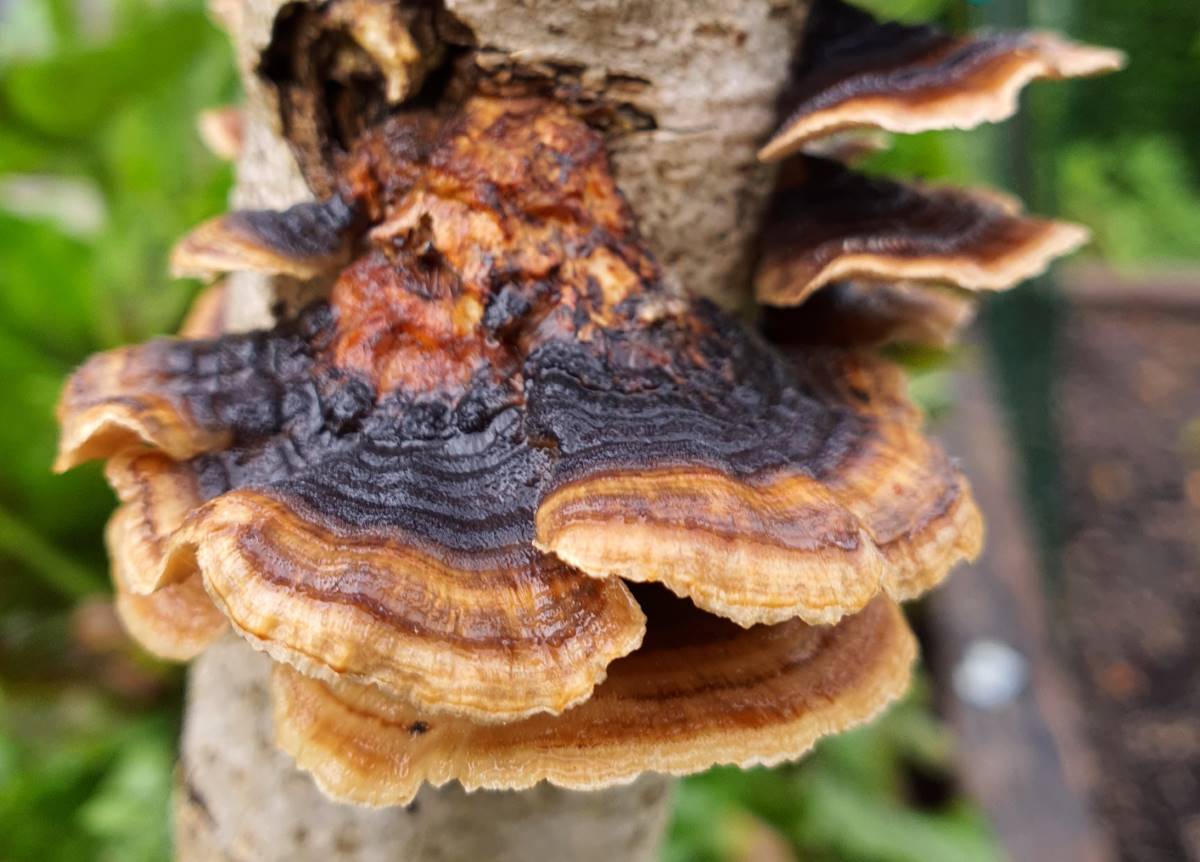
Trametes, a common bracket fungi. Turkey Tail (Trametes versicolor) is used as a cancer treatment in Japan. (Photo: Linda Moon)
He says russulas, native milk caps and bracket fungi are particularly common. The latter exist on dead wood or the dead parts of trees, he says.
“It’s a fascinating field, but an enormously understudied, under appreciated – at a scientific level – and underfunded field of study,” Steven says.
Steven’s fungus fetish – shared by partner and veterinarian Gemma Williams – has evolved into them running mycology workshops. Gemma, who is also a sleuth at identification, has hundreds of stunning pictures of fungi on her Instagram account: missaudreysadventures.
The photographer
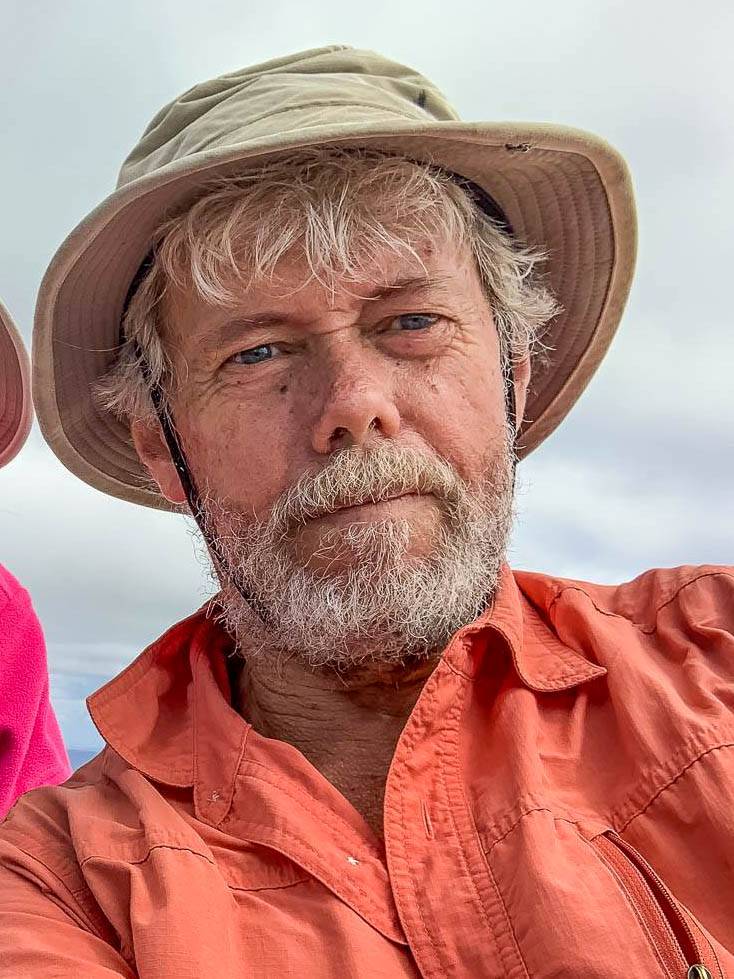
David Noble: “I find the whole fungi kingdom fascinating.” (Photo: David Noble)
Another contributing to fungus awareness and appreciation is David Noble. Legendary for his blogs and photographs of the Blue Mountains and beyond, he’s been photographing fungi for over ten years. In his nature forays into the Blue Mountains he’s come across scores of fungus species, including potentially new and undescribed species.
“A few days after a good fall of rain, it you walked from the bottom of Leura Falls through Leura Forest and then around to the base of the Scenic Railway, you could expect to find anything from 20 to 50 species,” he says.
The former science teacher took up an interest in fungi after retirement. “I had good friends that worked as botanists and ecologists, but none of my friends knew much about fungi, so I thought it would be a good kingdom to explore.”
“The bizarre forms that fungi exhibit are really amazing,” he enthuses. “From the conventional mushroom to Boletes with their pores and colour changes, fungi that looks like coral, fungi with spines, Jelly Fungi, the Cordyceps that grow off insects, fungi that has a trumpet shape – it goes on and on.”
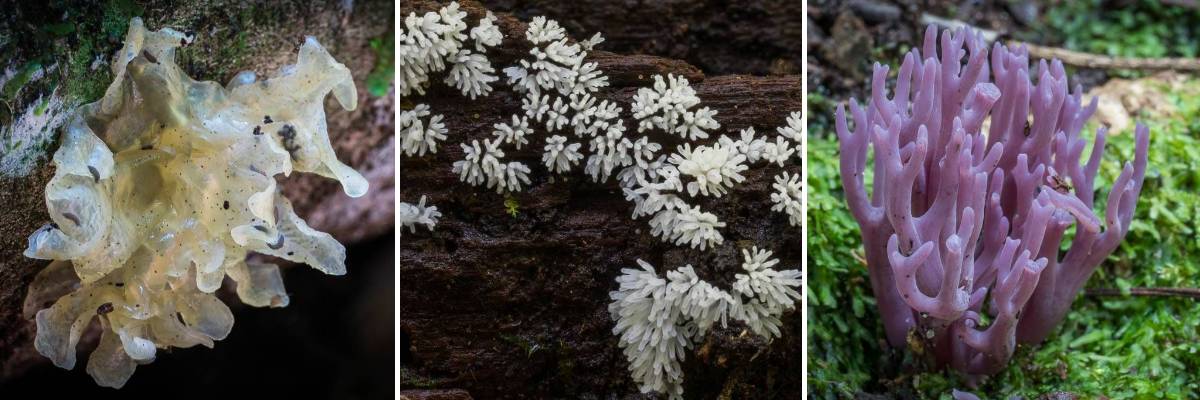
The many shapes of fungi. Jelly Fungus (Tremella sp) and Slime Mould (Ceratiomyxa fruticulosa) and Clavaria zollingeri. (Photos: David Noble)
His favourite are a group known as “waxcaps”. Small and colourful, they may be green, red, yellow or blue.
He urges people to look at the ground in the leaf litter when in rainforest gullies after rain. There you may find a strange fungus known as Dead Man’s Fingers. Shaped like small black clubs, they’re often seen coming out of rotten logs.

Fungi fever. Various colours of Waxcaps at Coachwood Glen, Blackheath. “Some of the species in the group are very common, but some are very rare and you may only find then once every few years,” David says. (Photos: David Noble)
Becoming a member of the Sydney Fungal Studies Group Inc has taught him a lot. The group was started by academics with expertise in mycology to further knowledge in the subject.
The mycologist
According to mycologist and fungus author, Alison Pouliot, fungi have colonised pretty much every terrestrial and aquatic habitat on earth. But generally they prefer undisturbed habitats with large amounts of organic matter (fungus food) of different species, sizes, shapes and ages. “The more diverse the habitat the greater the diversity of fungi,” she says.
While the Lithgow and Blue Mountains region hosts a wide variety of fungi, because they’re poorly surveyed no one knows exactly how many species exist here. In fact, the majority of fungi across Australia are yet to be named or discovered, Alison says.
According to DCCEEW (the Department of Climate Change, Energy, the Environment and Water) there’s an estimated 160,000 to 250,000 species of fungi in Australia. A largely undiscovered realm, less than five per cent have been described.
Interestingly, the nation is one of 18 countries considered to be ‘megadiverse’ in terms of fungi, Alison says.
“Fungi have largely been overshadowed by flora and fauna. We often only become aware of them when they produce mushrooms. So they’re not in our consciousness as much as animals and plants.” – Alison Pouliot.
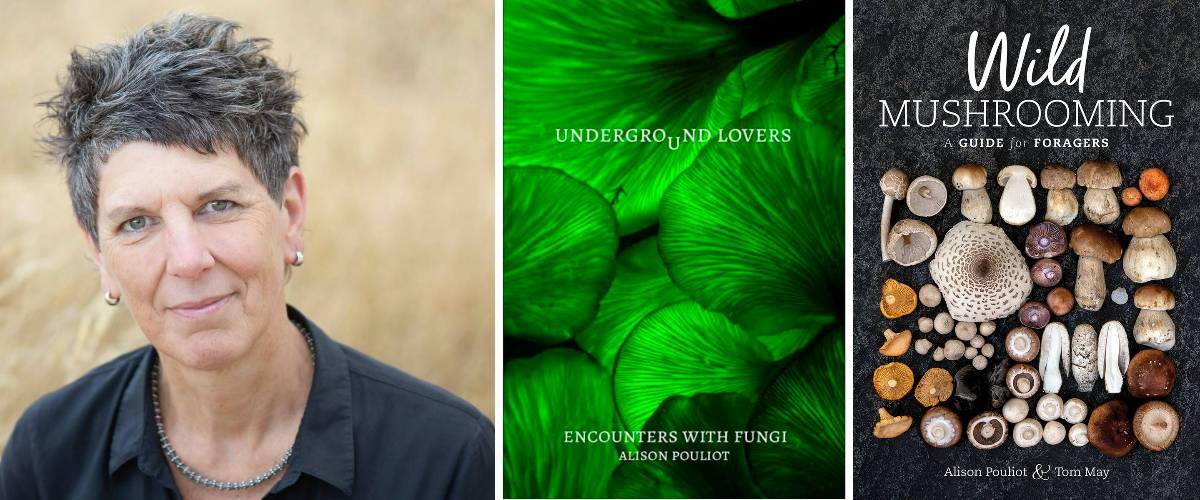
Mycologist Alison Pouliot has authored multiple books on fungi, including Underground Lovers and Wild Mushrooming. Photo: Valérie Chételat).
Fantastic facts about fungi
Fungi share characteristics of both plants and animals, but are neither, Alison says. The kingdom of fungi includes moulds, yeasts, rusts and lichens.
“They’re primary recyclers of organic matter, unlocking nutrients and releasing them for plants,” Alison says. “They support soils by putting in architecture, aerating them and filtering water. They connect up plants, helping them access nutrients and water.” Like a “connective tissue that underpins terrestrial ecosystems”, they’re vitally important, she says.
Fungi are ‘heterotrophs’ like us, Steven says. “They take food and consume it.” Like a huge underground gut, one of their key roles is to break down and decompose things (including wood) making nutrients available for themselves and plants. Plants are autotrophs, meaning they use food to produce energy.
Remarkably, the underground network of mycelium can cover many square kilometres. In fact, the largest organism in the world is a fungus. The “Humongous Fungus” – as it’s nicknamed – is a species of honey mushroom in Oregon spanning 9 square kilometres. Scientists estimate it’s over 2,400 years old.
Helping the planet, some fungi store carbon in the soil; others have been found to break down soil toxins including heavy metals, plastics, petrochemicals, oil and even radioactive materials.
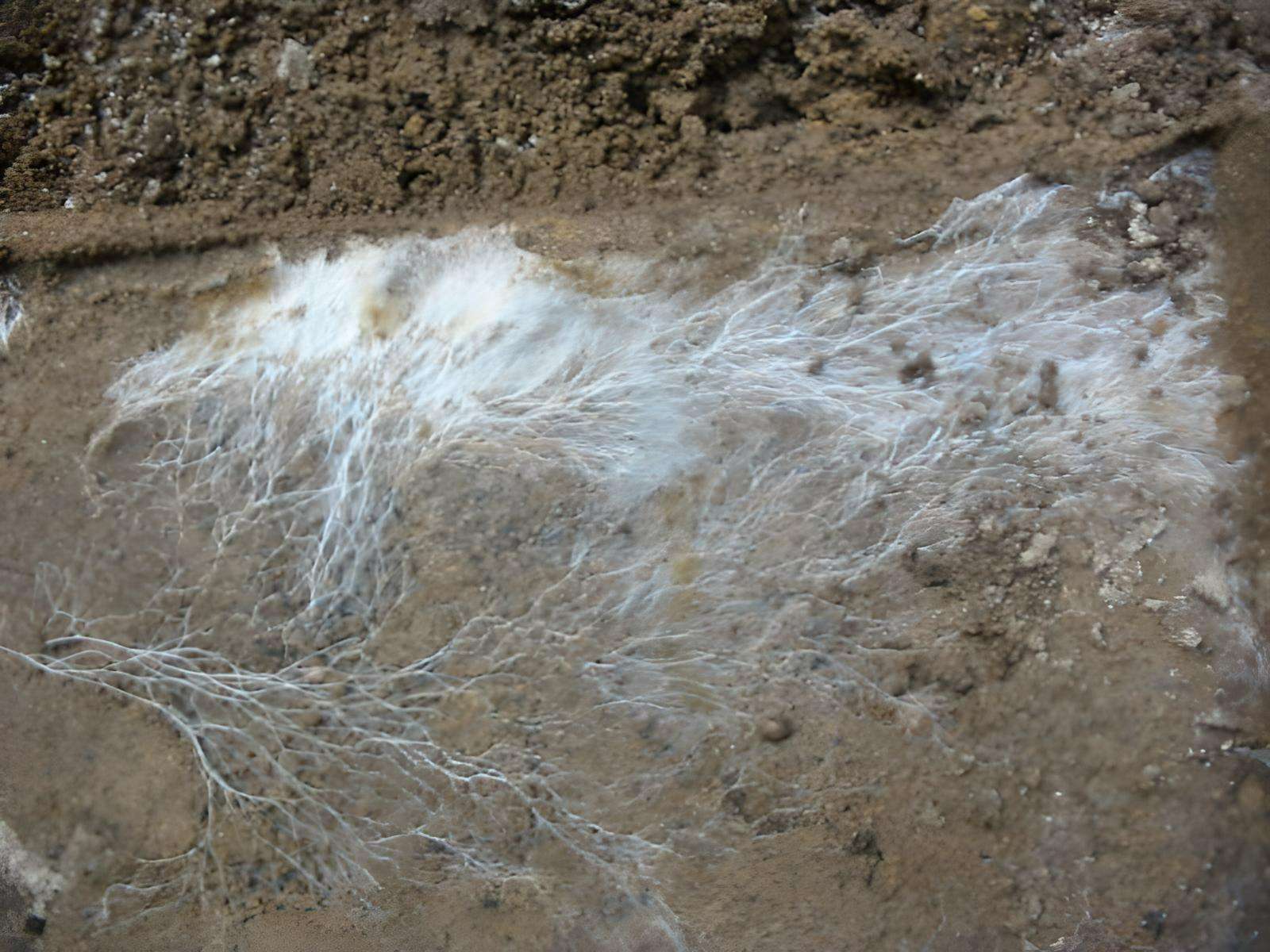
The mycelium – connective tissue of soil. (Photo: Lex en ik woon, Wikimedia. Image licensed under the Creative Commons Attribution-Share Alike 3.0 Unported license.)
How fungi help heal the landscape after bushfires
Fungi play a role in succession and rebuilding of the landscape after a bushfire. Pyronema species colonise alkaline ash beds after fire, paving the way for larger macrofungi like Leathery Sawgills which fruit off buried wood, Gemma says. The fungi provide emerging plant seedlings with the nitrogen, minerals and water they require. After the recent bushfires, Gemma and Steven discovered scores of Leathery Sawgill.
“When there’s a disturbance, certain species will come up and they have a job or niche, and then they’ll do their thing – that could be anything from holding soil so it doesn’t wash away to changing soil pH.”

Leathery Sawgills [Neolentinus dactyloides] rising out of burnt soil affected by the 2020 fires are powerful healers of the forest. (Photos: Gemma Williams)
Fungus conservation
Theoretically, fungi can live indefinitely as long as they have a food source. However, few get the opportunity, Alison says. Agriculture, forestry and land development disturbs their habitats and robs them of food. Other threats to fungi include invasive species, climate change, pollutants and agrochemicals like pesticides, fungicides and herbicides.
“They need to be recognised as a part of biodiversity and included in conservation initiatives,” Alison says. “For example, we know of several dozen native mammals that feed on fungi. There’s no point in protecting the mammals if we don’t protect their food source, too.”
“It’s taken a long time for people to recognise their great ecological significance, but on a positive note, things are changing rapidly as people recognise what important and amazing organisms they are.”
In 2020, Chile became the world’s first country to incorporate mushrooms into environmental legislation, thanks to the work of the Fungi Foundation.
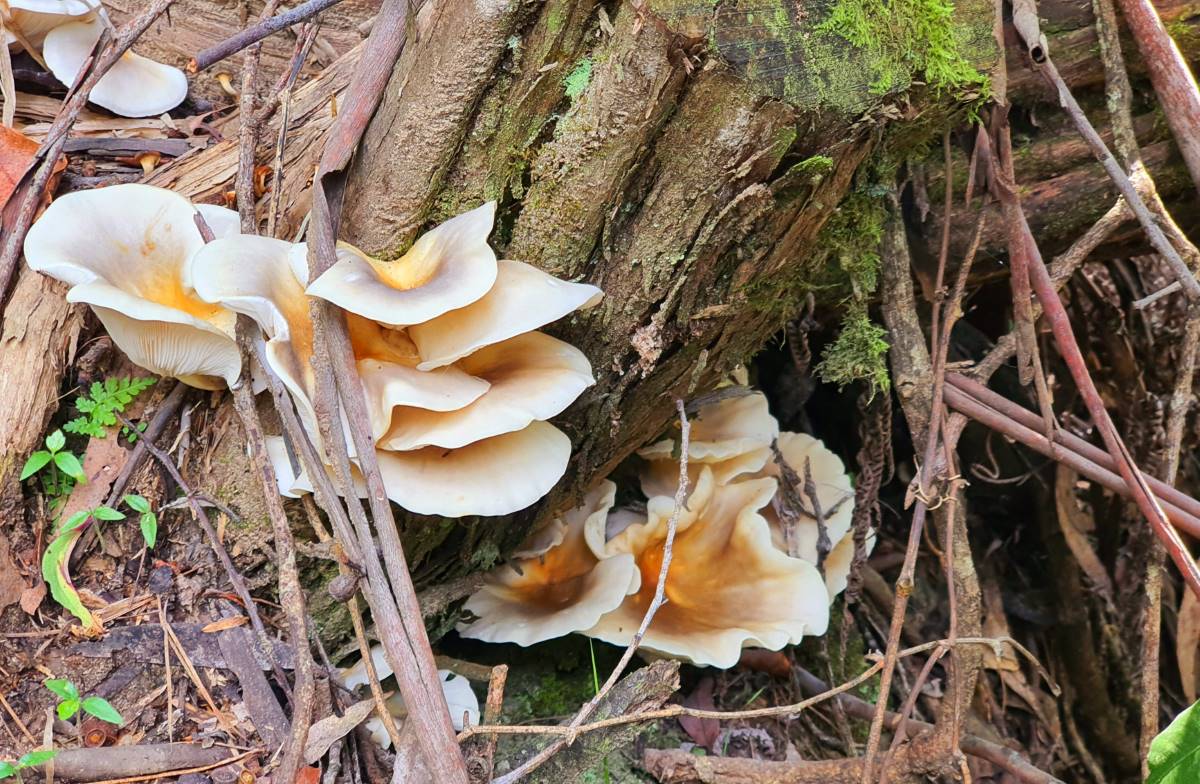
Undisturbed bioluminescent, glow-in-the-dark fungus, Ompholatus nidiformis, thriving on a tourist walk in the Katoomba Falls area. (Photo: Linda Moon)
Foraging edible fungi
Legally speaking, it’s fine to collect ‘exotic’ species of mushroom, Steven says. The Saffron Milk Caps and Slippery Jacks commonly sought after by foragers are introduced varieties associated with pine trees. Where something is in the landscape is a super important part of fungi ID, Steven emphasises.
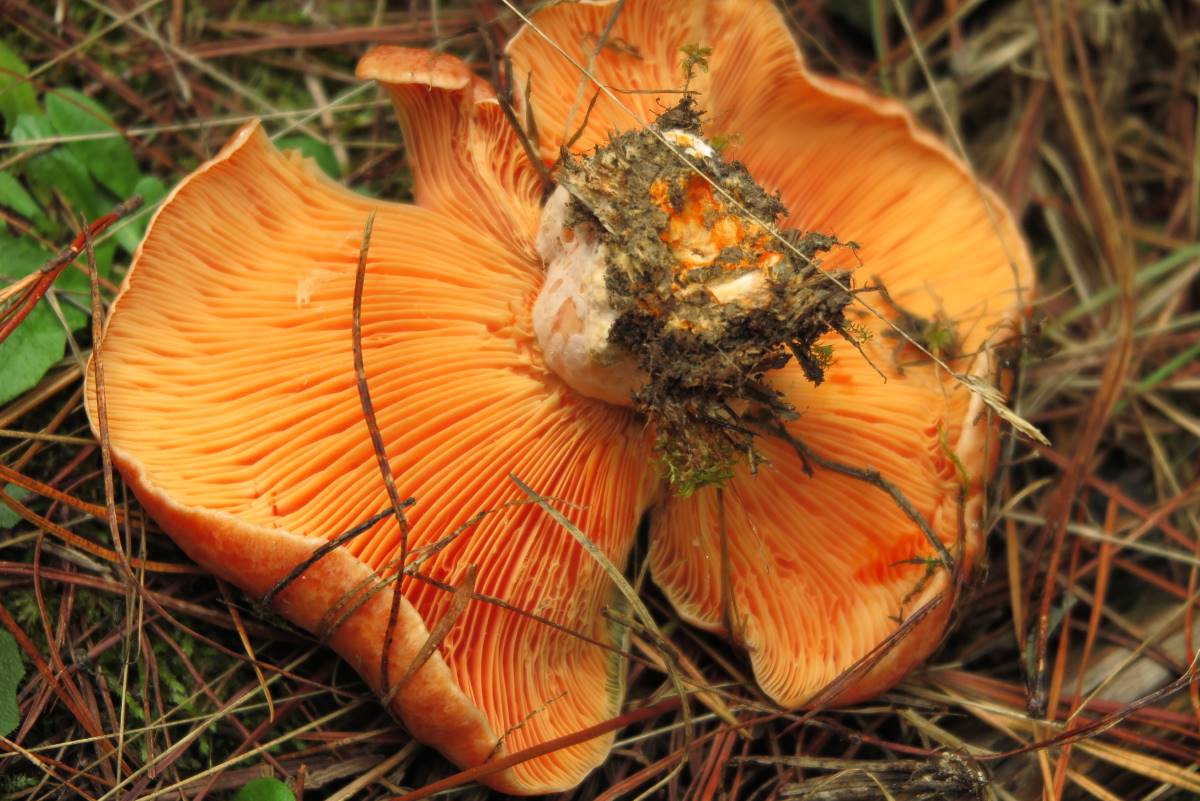
The Saffron milk cap – popular with mushroomers and found under pine trees near Oberon and elsewhere. (Photo: Linda Moon)
When in doubt, do without. Or take an expert with you.
“Interestingly, there’s only one test for edibility,” Steven says. “And if you get it wrong, which is entirely possible and easy to do, it can have quite a catastrophic outcome.”
Alison agrees. “We’re yet to name most fungi let alone know which are edible and toxic”.
There are several ‘native’ edible mushrooms in Lithgow and the Blue Mountains. “They were a food source for Aboriginal people,” Steven says.
Biodiversity laws protect native fungi, meaning you can’t pick them, he says. Mycologists have to have a scientific license to collect them.
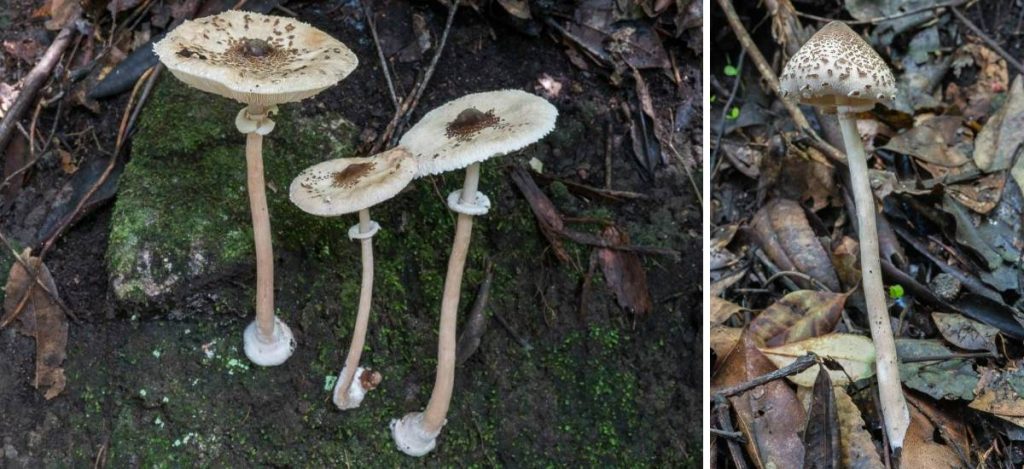
Native edible mushie, Macrolepiota clelandii (the Australian Parasol) thrives in Eucalypt forests but has many toxic lookalikes, Alison says. (Photos: David Noble)
Fungi in the garden
Should we welcome the fungi that pop up mysteriously in our gardens?
It’s complex. Some fungus species are pathogenic, Steven reminds. These include Armillaria (the Honey Fungus).
Generally speaking though, “fungi are an indication that soils are intact and there’s organic matter to feed on,” Alison says. “If there are no fungi appearing, then there’s a reason to worry about the health of your garden.”
All fungi need nice, soft, healthy soil, Steven says. “One of the worst things that can happen to soil is to be compacted.” The tiny mycelium tubes (the hyphae), that transport nutrients and water to plants are only a few microns thick, he says. “You can see them when you dig in the soil and find all those little white threads that look like spider webs.” These wend their way in between soil and its components, the broken down pieces of rock, rotting leaves and bits of sticks, looking for what the organism needs – whether it’s water or a piece of wood, and it starts to decompose it.
“Underneath your feet, is a really complex relationship between living and non-living elements” – Steven Fleischmann.
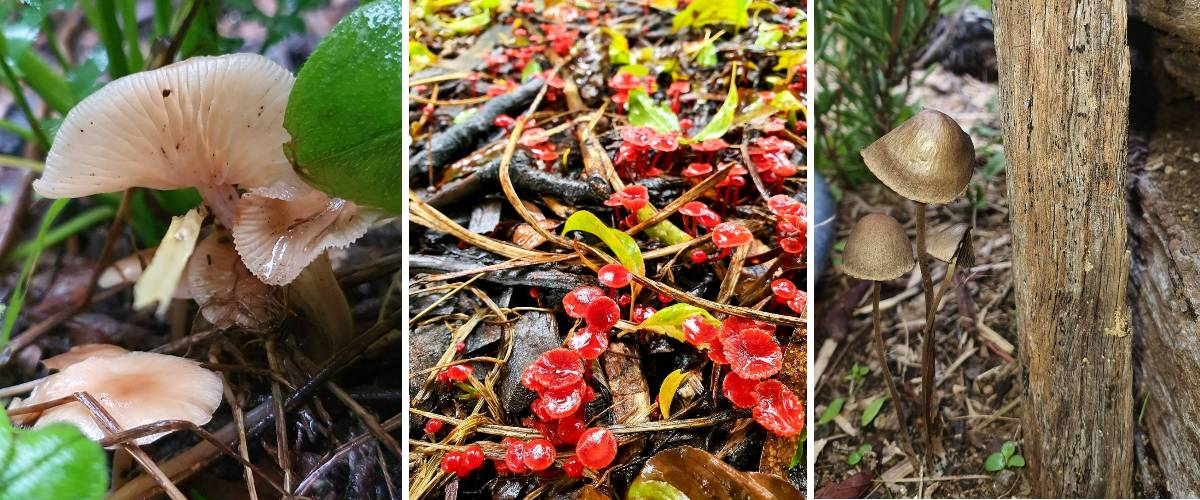
Various fungi cropping up in a small Katoomba garden after autumn rain. Sign of a healthy soil. (Photo: Linda Moon)
Take Action:
- Attend a free workshop in Lithgow (with a talk by a mycologist and a demonstration of how to grow oyster mushrooms as part of Mycology May – a month of workshops and talks across the Central Tablelands).
- Watch Fantastic Fungi, the mushroom doco people are raving about. It’s on Netflix.
- Join your local Bushcare group.
- Avoid compacting your soil and add lots of organic matter to it.
- Avoid picking or damaging mushrooms in the wild.
- Teach others to value fungi.
- Contribute to and learn from citizen nature ID and conservation sites including iNaturalist and Fungimap.
- Lobby governments to stop clearing native vegetation.
Share this article:
This story has been produced as part of a Bioregional Collaboration for Planetary Health and is supported by the Disaster Risk Reduction Fund (DRRF). The DRRF is jointly funded by the Australian and New South Wales governments.



